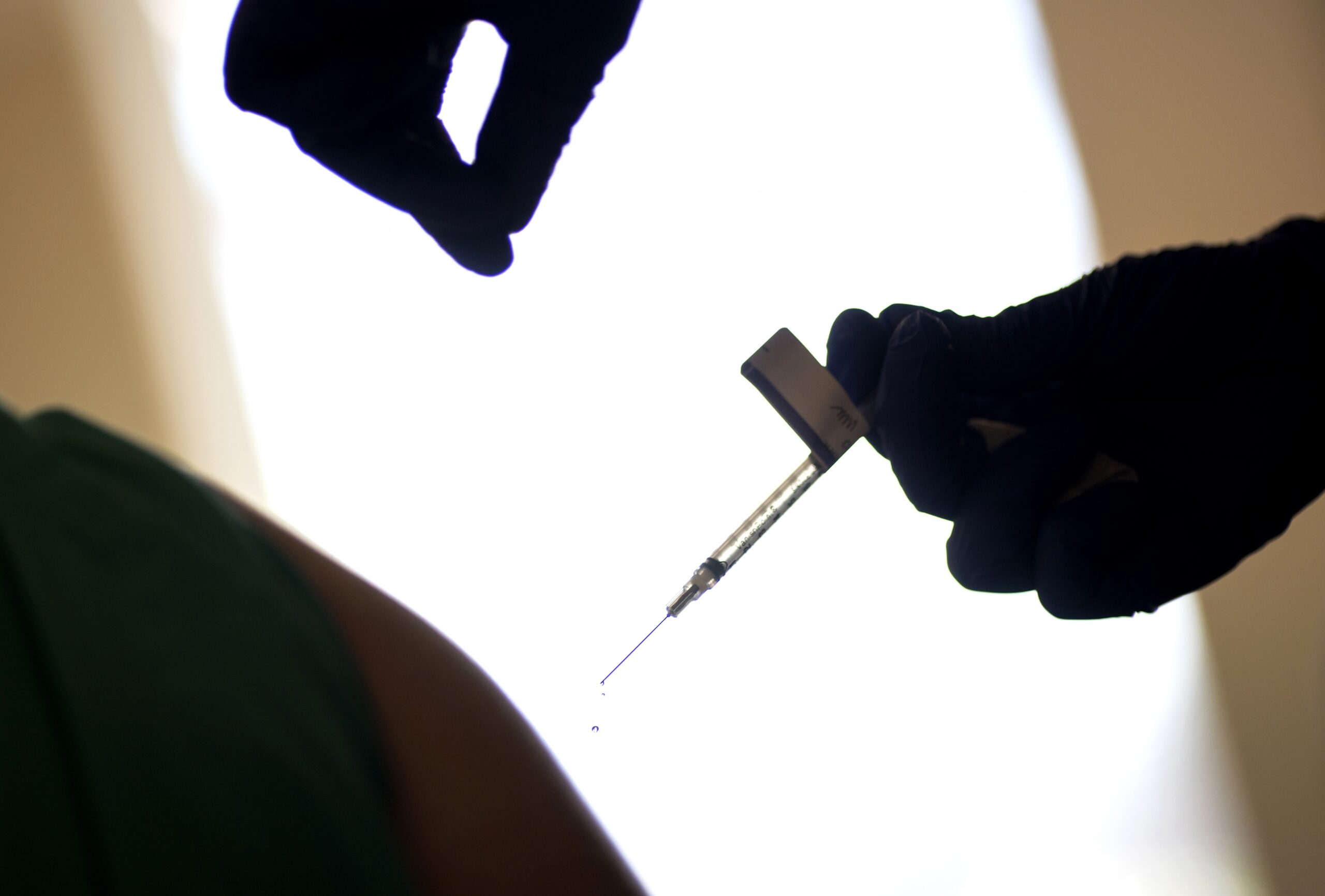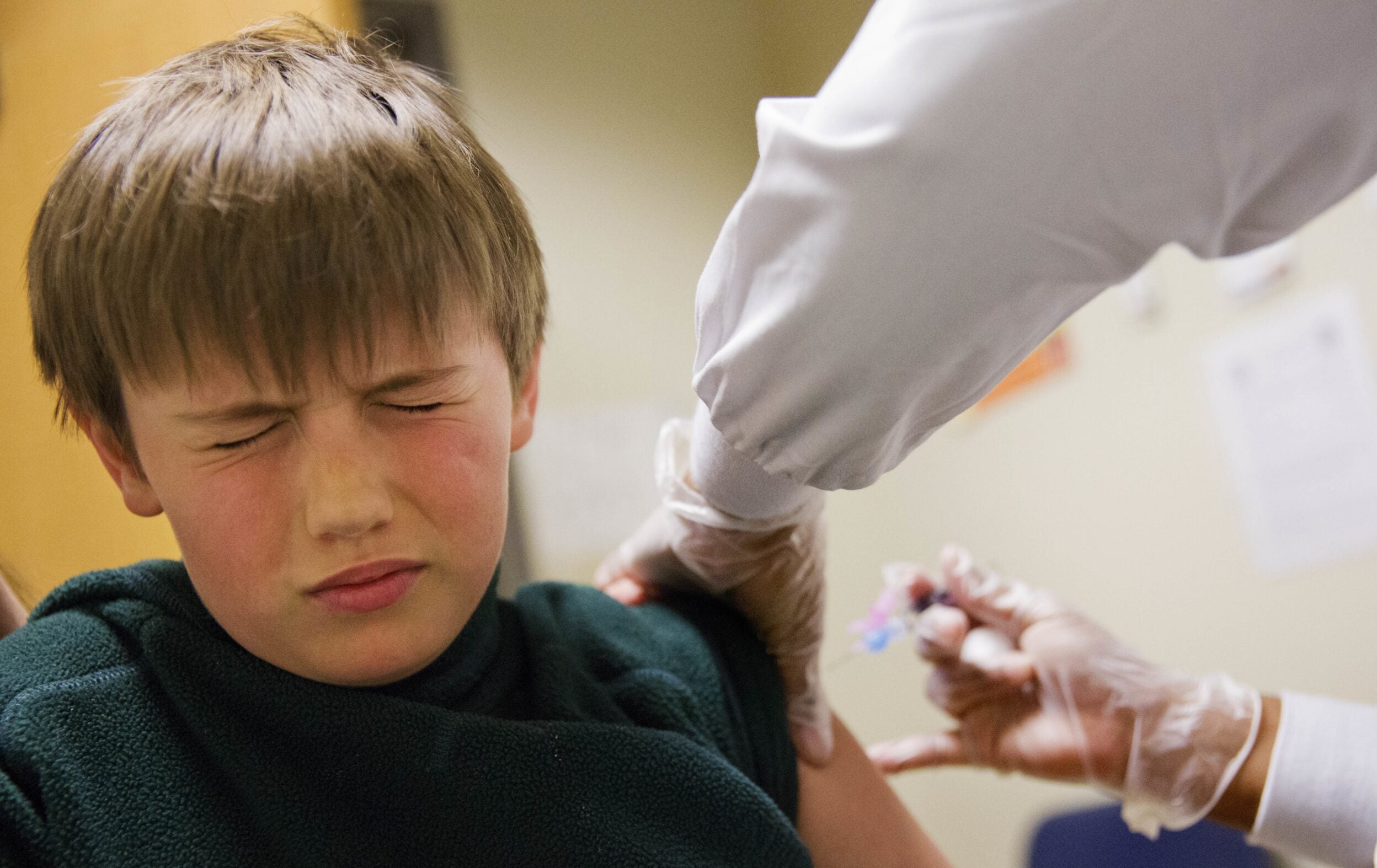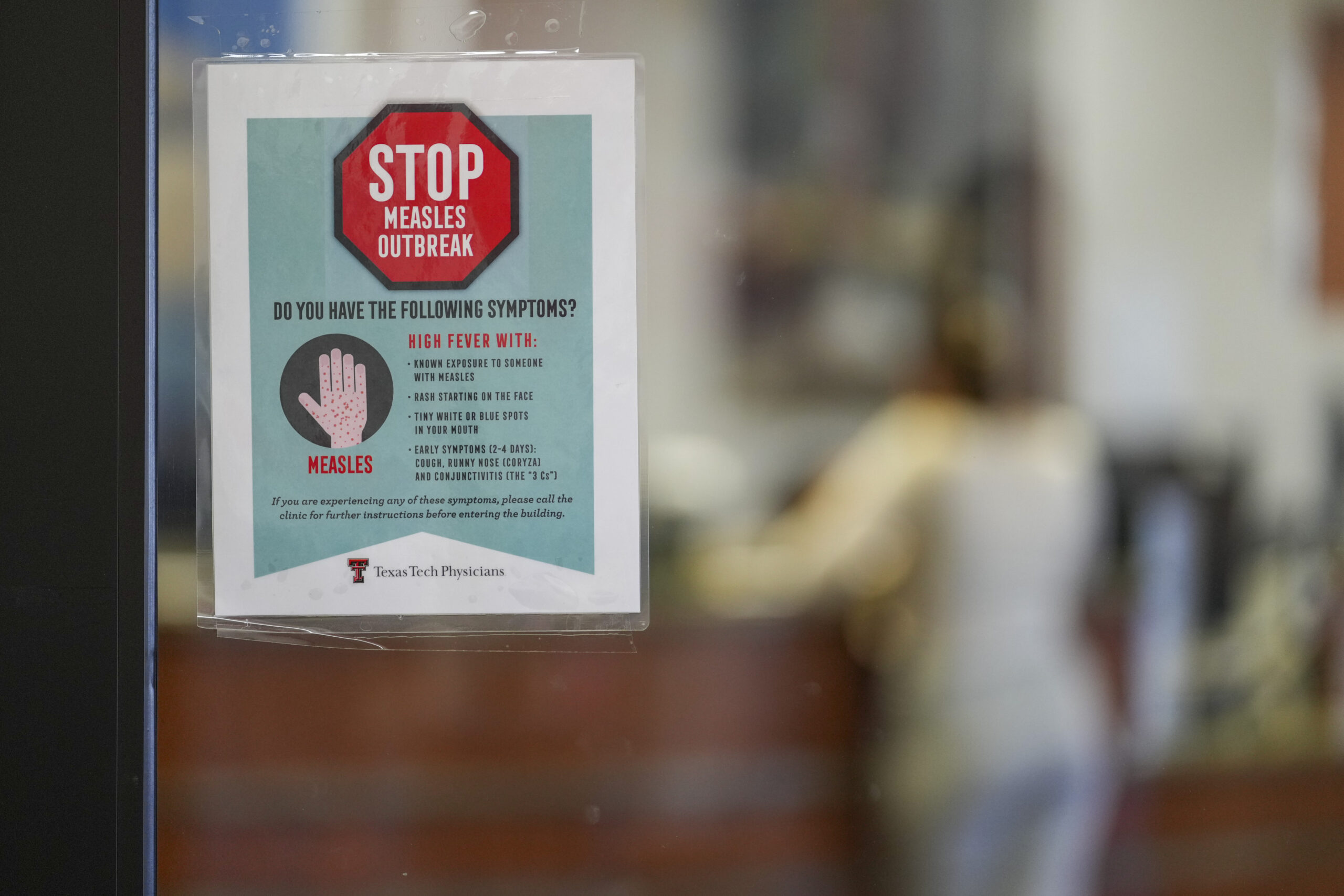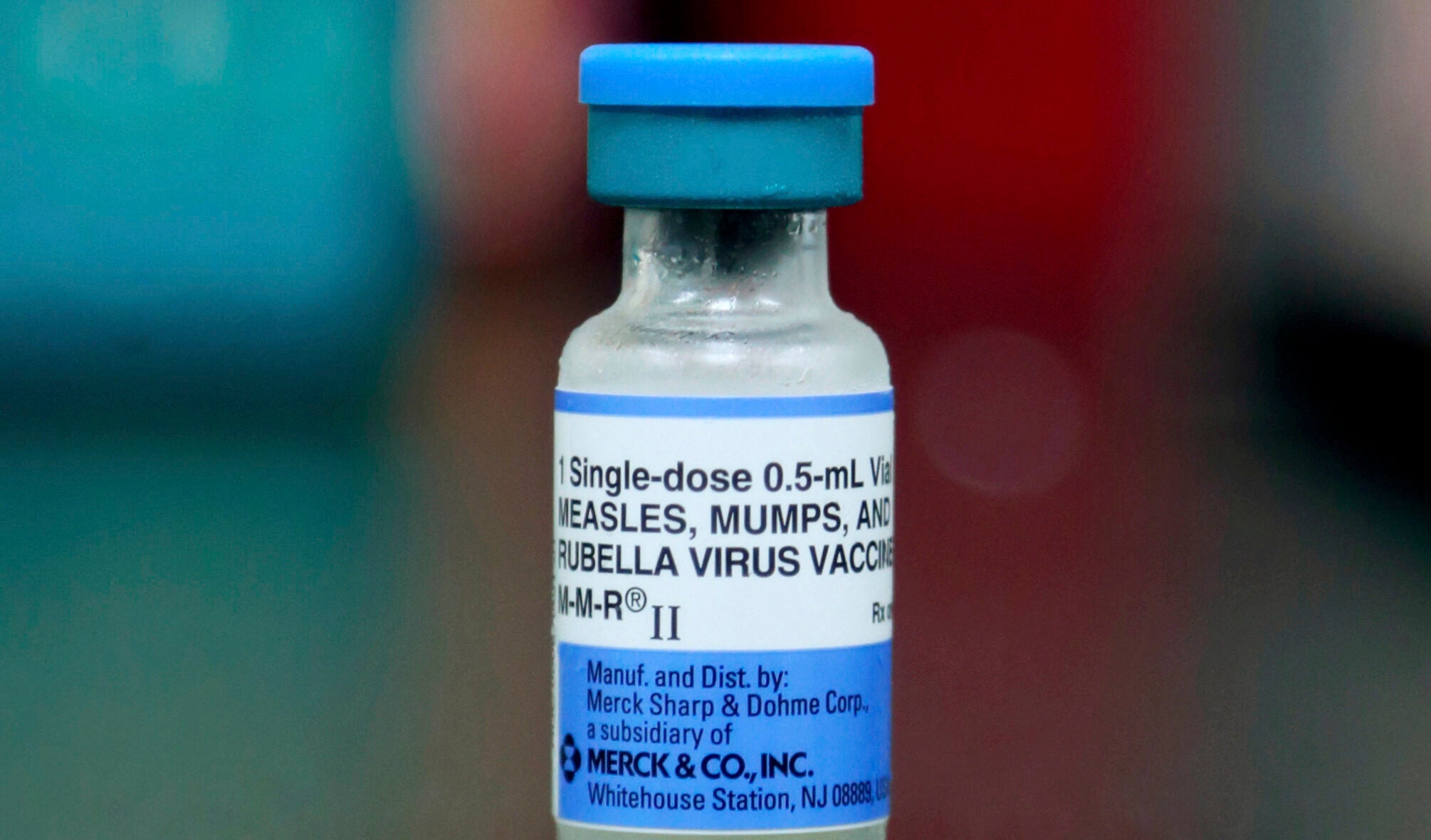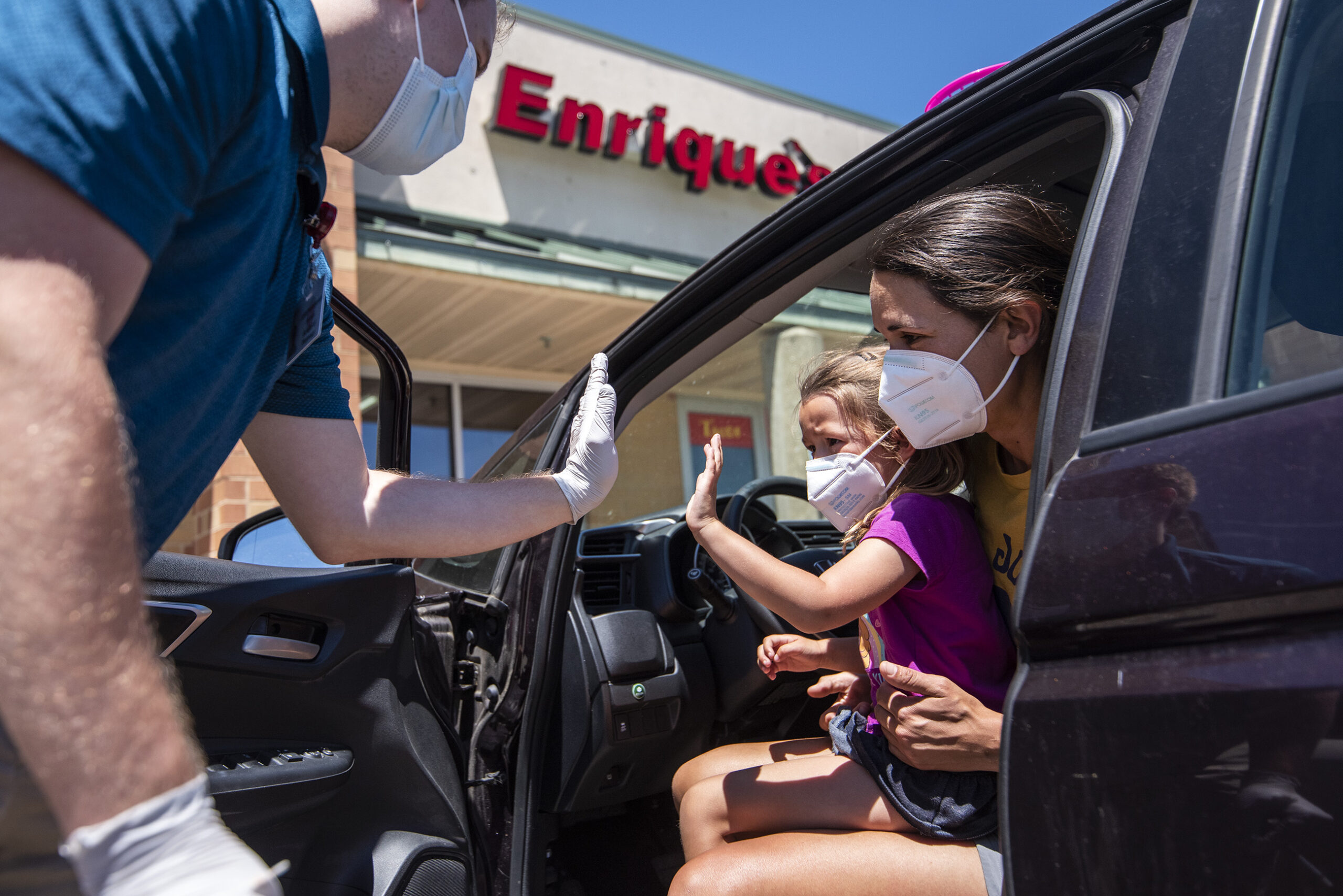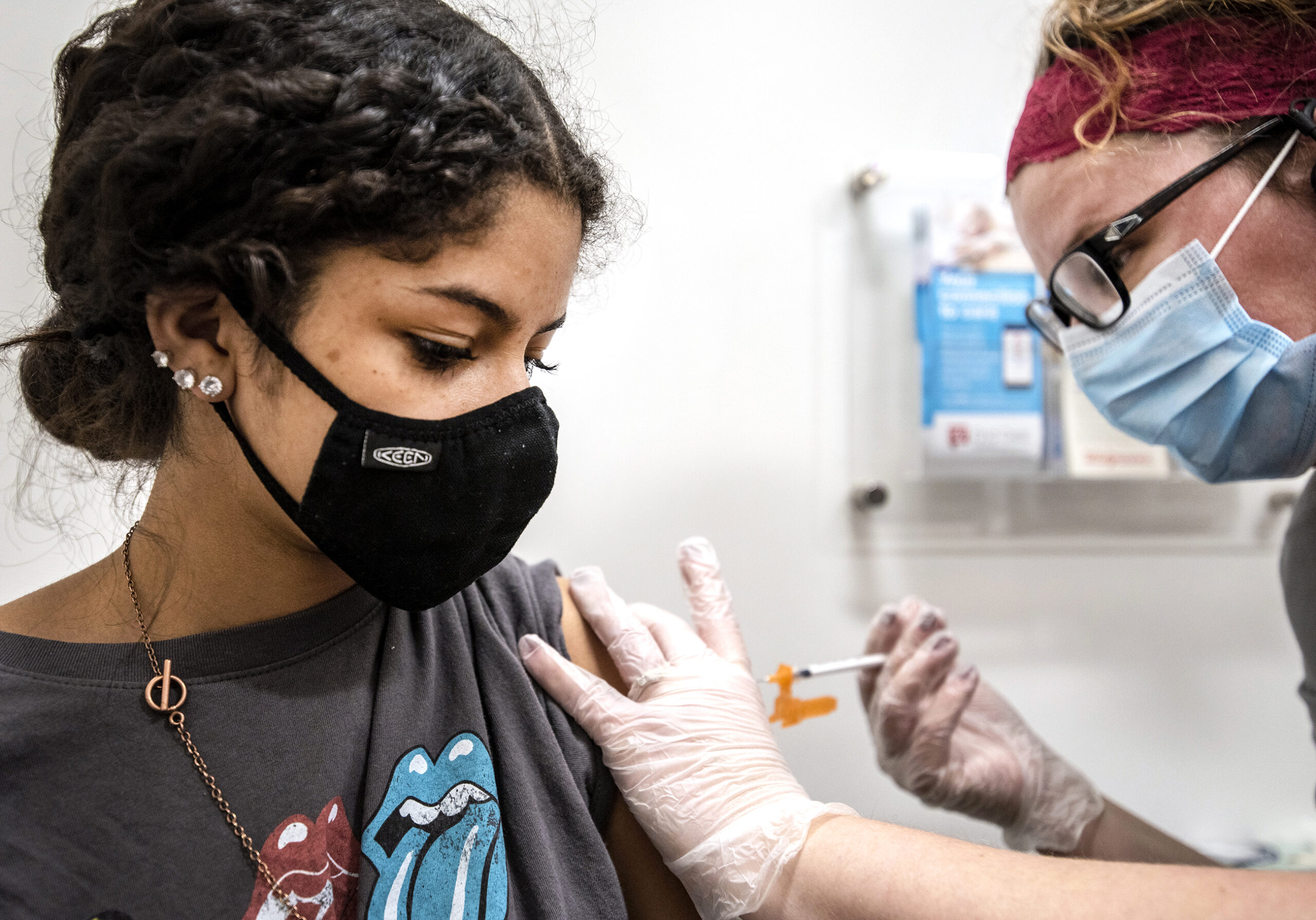The pace of vaccinations against COVID-19 in the United States has been slow. Compared to the speed at which vaccines have been manufactured and approved, it seems downright sluggish.
As Wisconsin allows those age 65 and older to get shots, health officials have said that administering to a broader group will help speed up the vaccination process. But they’ve also warned people it will take at least two months to vaccinate the 700,000 Wisconsinites in this age group. And the list of people prioritized to get the vaccine has been ever-growing and is still evolving. New vaccination recommendations including essential workers, older adults and frontline health staff comprise almost half of all adults in Wisconsin, and the state’s supply remains much too low to handle them all.
“It’s really complicated to go from zero to 100 mph and be writing the rules as you go,” said Patrick Remington, former epidemiologist for the Centers for Disease Control and Prevention and director of the University of Wisconsin-Madison’s preventive medicine residency program.
Stay informed on the latest news
Sign up for WPR’s email newsletter.
Biden: US Will Give 100M Shots In 100 Days
In the week before his inauguration, President Joe Biden acknowledged that speeding up the distribution of vaccines would be a top priority for his administration. He called the vaccine rollout in the U.S. up to this point a “dismal failure.”
Biden has set an ambitious goal: 100 million shots in 100 days. To reach that level, states like Wisconsin will need more vaccine than they’ve received so far, and a workable plan to get shots into arms.
In Wisconsin, only 5 percent of the population has received at least one dose of a two-shot regimen. GOP state lawmakers have criticized Wisconsin’s rollout, and one lawmaker introduced a bill that would require a sped-up plan.
When asked, Gov. Tony Evers characterized the state’s vaccine rollout as “a little bumpy,” saying Wisconsin isn’t getting enough vaccine from the federal government and vaccinators needed time to prepare.
Across the U.S., only a portion of the 38 million doses allocated have actually been used. Some states are doing better than others. North Dakota, for instance, is vaccinating at twice the rate Wisconsin is. For every 100,000 people in North Dakota, 7,774 shots have been administered, compared to 4,101 per 100,000 in Wisconsin as of Friday. West Virginia leads the U.S. in vaccinating nursing homes.
Vaccine Guidelines Lead To Complex Dilemmas
Even with broad guidance from the state on who can currently get the shot, individual cases can present tricky dilemmas.
Rita Baker recently contacted WPR’s WHYconsin. Baker, a retired teacher who taught high school German in Connecticut, temporarily moved to Madison and wanted to know if she’d be able to be vaccinated in Wisconsin versus traveling back to Connecticut.
Baker is staying with her daughter and son-in-law where she cares for her first grandchild while the child’s parents work.
“With the pandemic no one felt comfortable sending the baby to day care. It was just 2 months old at the time. So my husband and I drove 15 hours to Madison and I became a ‘granny nanny,’” she said.
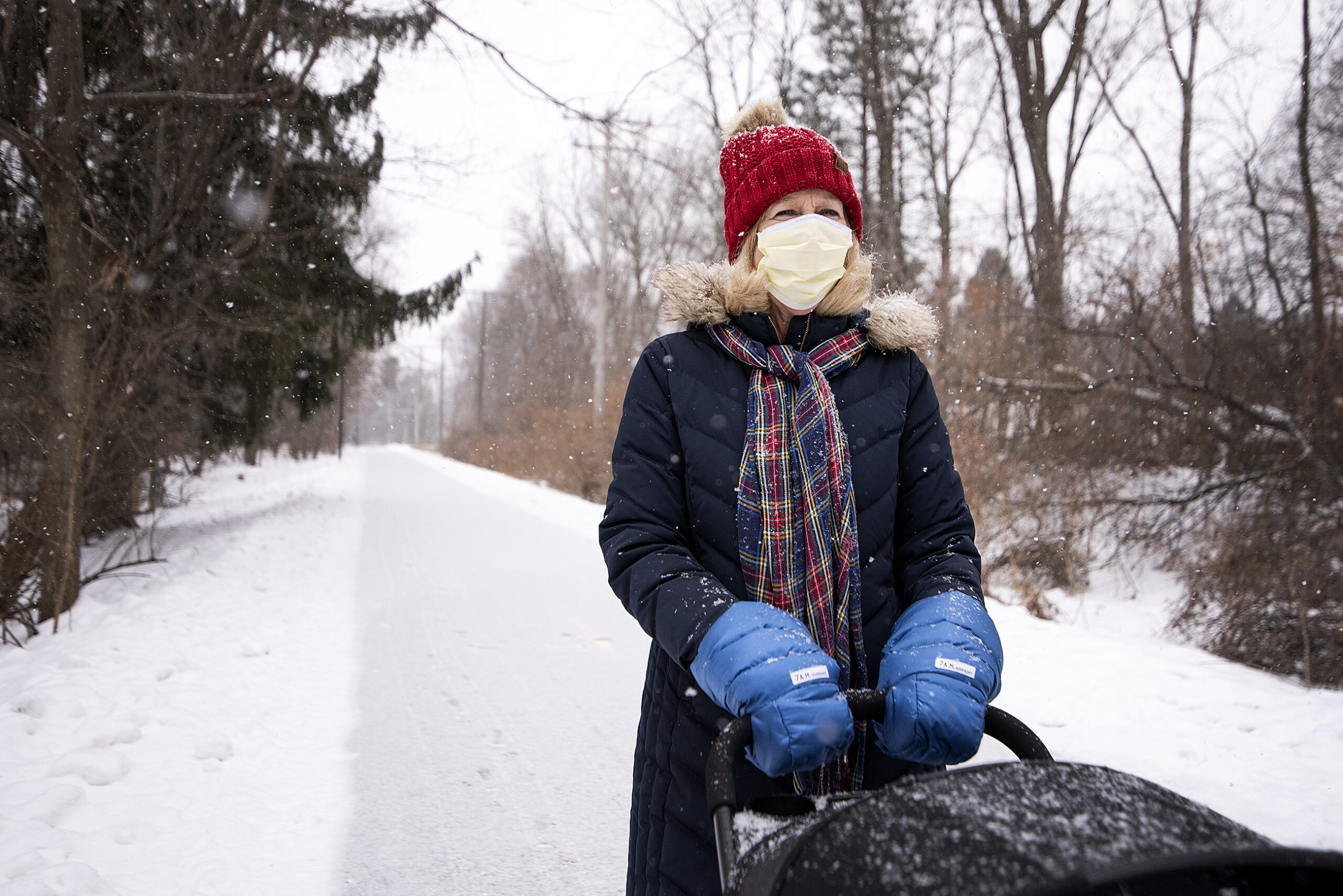
The 67-year-old has pulmonary sarcoidosis, an autoimmune disease that affects the lungs. The State Disaster Medical Advisory Committee (SDMAC) hasn’t recommended prioritizing those with chronic health conditions. But Baker is anxious to get protected against COVID-19 — and she’s now eligible due to her age.
Wisconsin doesn’t have a firm policy on whether to exclude those living outside its borders. Hospitals are currently vaccinating staff who work in the state but live elsewhere.
Like a lot of other people, Baker wants to know when and where she can get vaccinated. In her home state of Connecticut, she says, people can receive text updates on whether they’re eligible and how to sign up for a shot.
Some Wisconsin hospitals and public health departments are starting to reach out to those eligible for COVID-19 vaccination.
But in the six weeks since Wisconsin started vaccinating frontline health care workers and nursing home residents against COVID-19, the process has been more complicated than many hoped, and sometimes confusing. Local health departments have been swamped with questions from people asking for shots many can’t yet get.
Others have made futile calls to a United Way hotline in Dane County mistakenly believed to be booking vaccine appointments. The state Department of Health Services (DHS) expects a registration system to go online in mid-February that will connect people to vaccinators.
Additionally, priorities outlined by Wisconsin health officials have sometimes been ignored. In Janesville, teachers were scheduled to get the vaccine even though K-12 instructors have not been formally approved as priority group.
Finicky Vaccine, Uneven Distribution
Wisconsin is opening up vaccination to broader populations at the same time that it’s still vaccinating frontline health workers. So far, 40 percent of health care workers have been vaccinated against COVID-19, according SDMAC.
Those still waiting include doctors at community clinics around the state. These health professionals treat lower-income patients, and work with populations that are at high risk of serious complications from the coronavirus.
As community clinic staff get their shots, they also have to plan how to vaccinate patients with the fragile vaccines that have very specific storage requirements and have to be used within six hours of being opened.
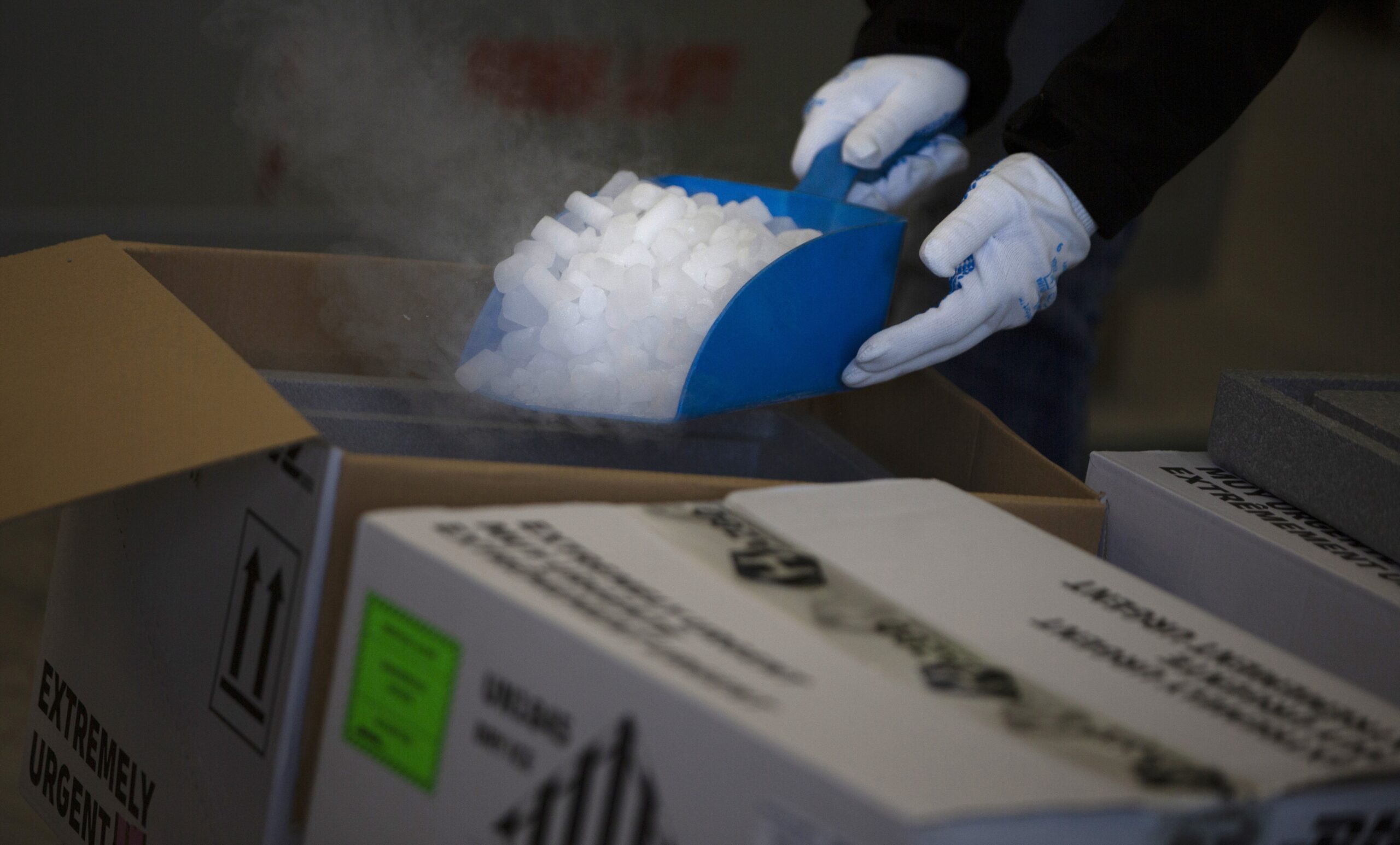
“Obviously it can lead to restricting how many people you schedule for vaccination, hoping that they come,” said Dr. Allison Kos with Progressive Community Health Center in Milwaukee. “In the event that they ‘no-show’ for their vaccination, how do you scramble or best use the doses so you prevent waste?”
States don’t want to waste doses, and they don’t have time to waste. A new, more contagious strain of COVID is circulating in the U.S. which threatens to worsen the pandemic.
In order to vaccinate 80 percent of Wisconsin’s population by the end of June — a current target for DHS — DHS Deputy Health Secretary Julie Willems Van Dijk said the state would need to receive three times as much vaccine per week as it’s getting now. And while the vaccine supply is expected to be steady in the next three to four weeks, she said there’s no indication it will increase any time soon.
More Vaccinators Are On The Way
The first vaccinations took place in hospitals around the state because that’s where many frontline health care staff work.
Later shots were also administered by local health departments, including a vaccination clinic set up in Milwaukee for municipal employees.
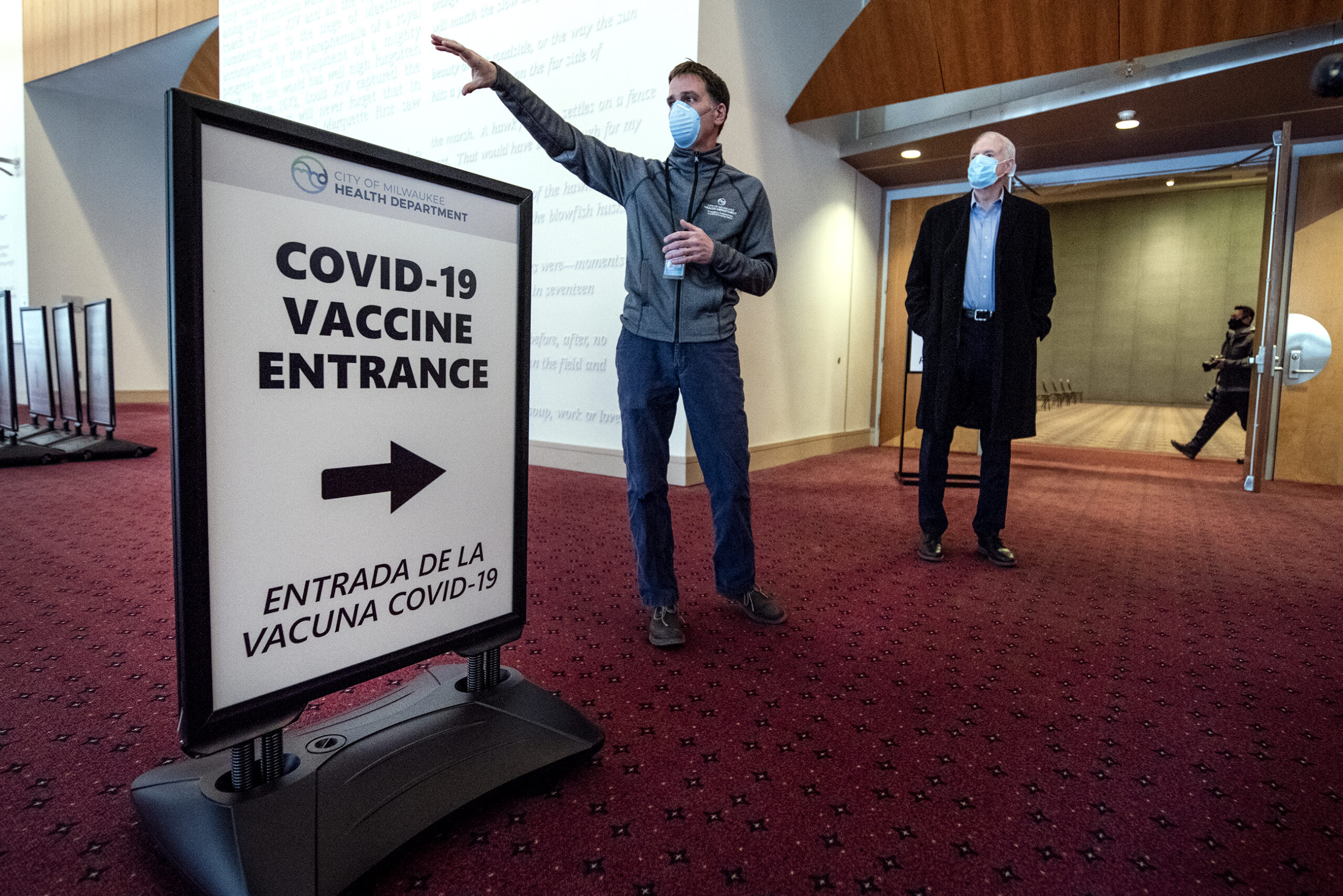
To pick up the pace of vaccinations, the state is enlisting pharmacists, the Wisconsin National Guard and nursing student volunteers. On Tuesday, nine mobile vaccination teams started working with local health departments to vaccinate police and firefighters, as well as EMS and health care personnel who don’t have access to the vaccine through a health system.
State health officials say the state is currently getting about 70,000 doses of COVID-19 vaccine a week from the federal government. That’s not enough to immediately vaccinate everyone in the first and second priority groups.
As the amount of vaccine increases, the gap between supply and demand may ease. Right now, more people want the vaccine than can get it. But Wisconsin and other states could have the opposite problem in the future if people refuse the vaccine once it’s widely available.
“Once you get the supply and figure out ways to administer the vaccine, then all of a sudden we’re going to be confronting some of the challenges in the public in resistance to being vaccinated. That’s not apparent now,” said UW-Madison’s Remington.
